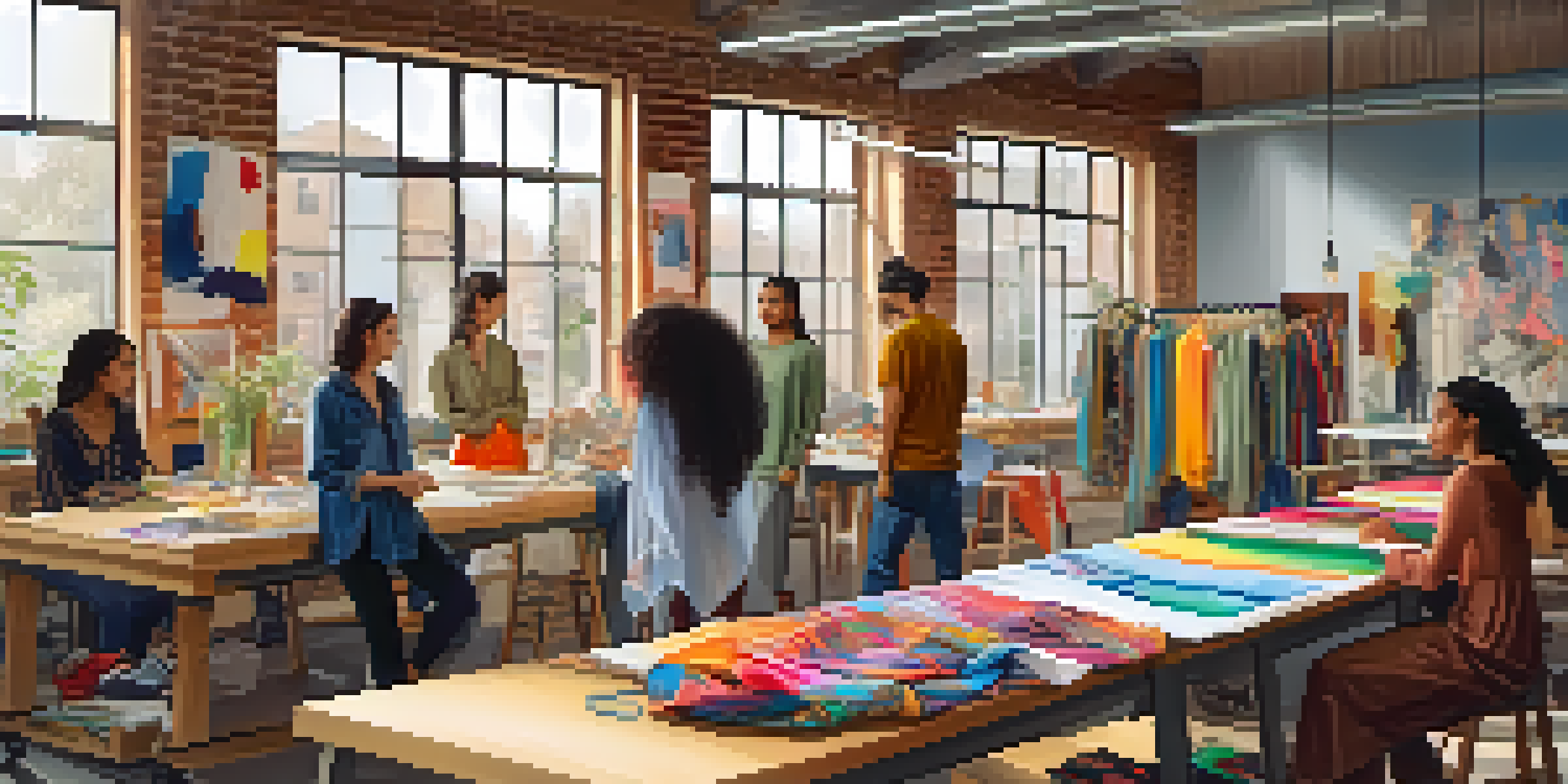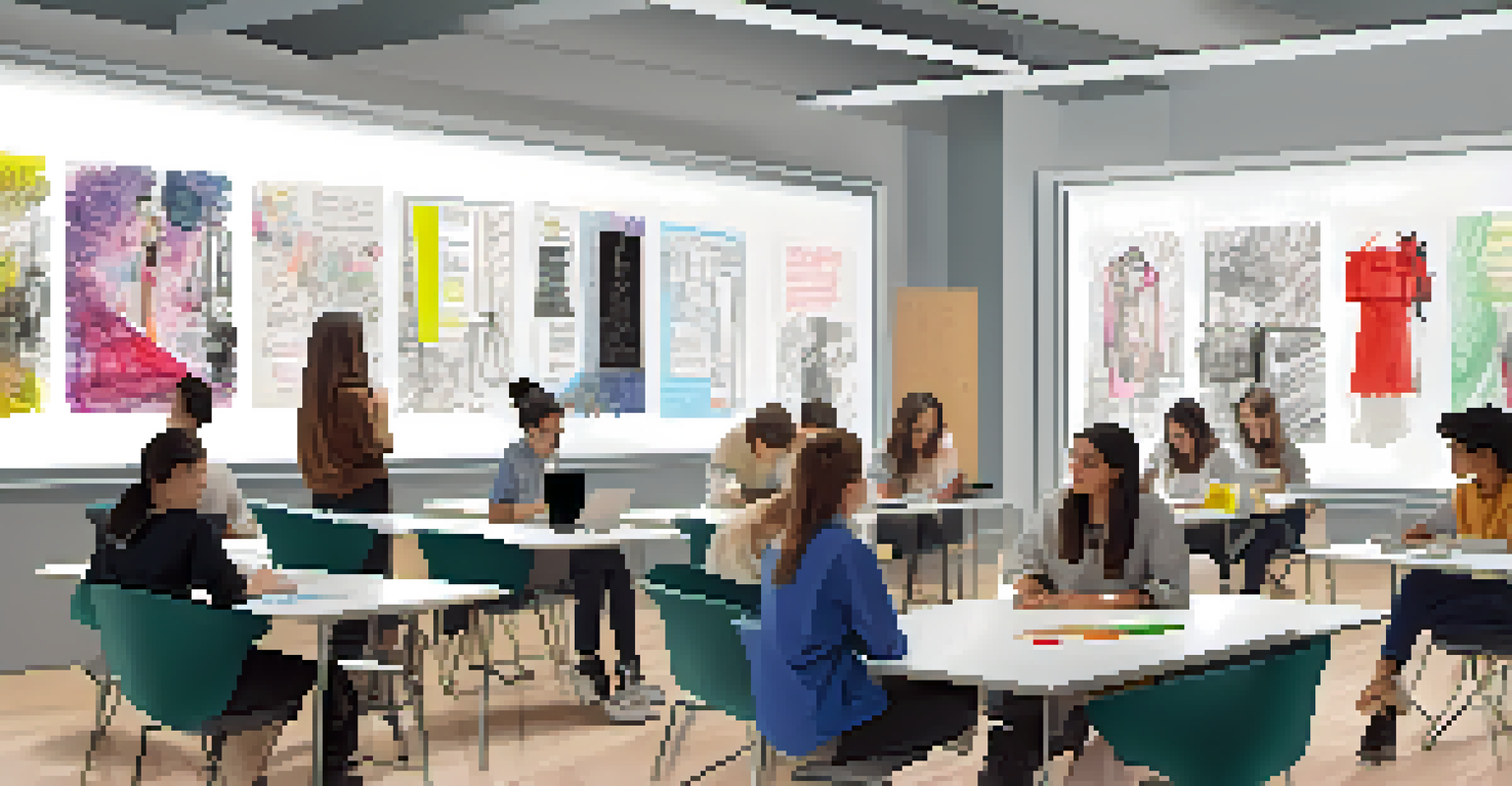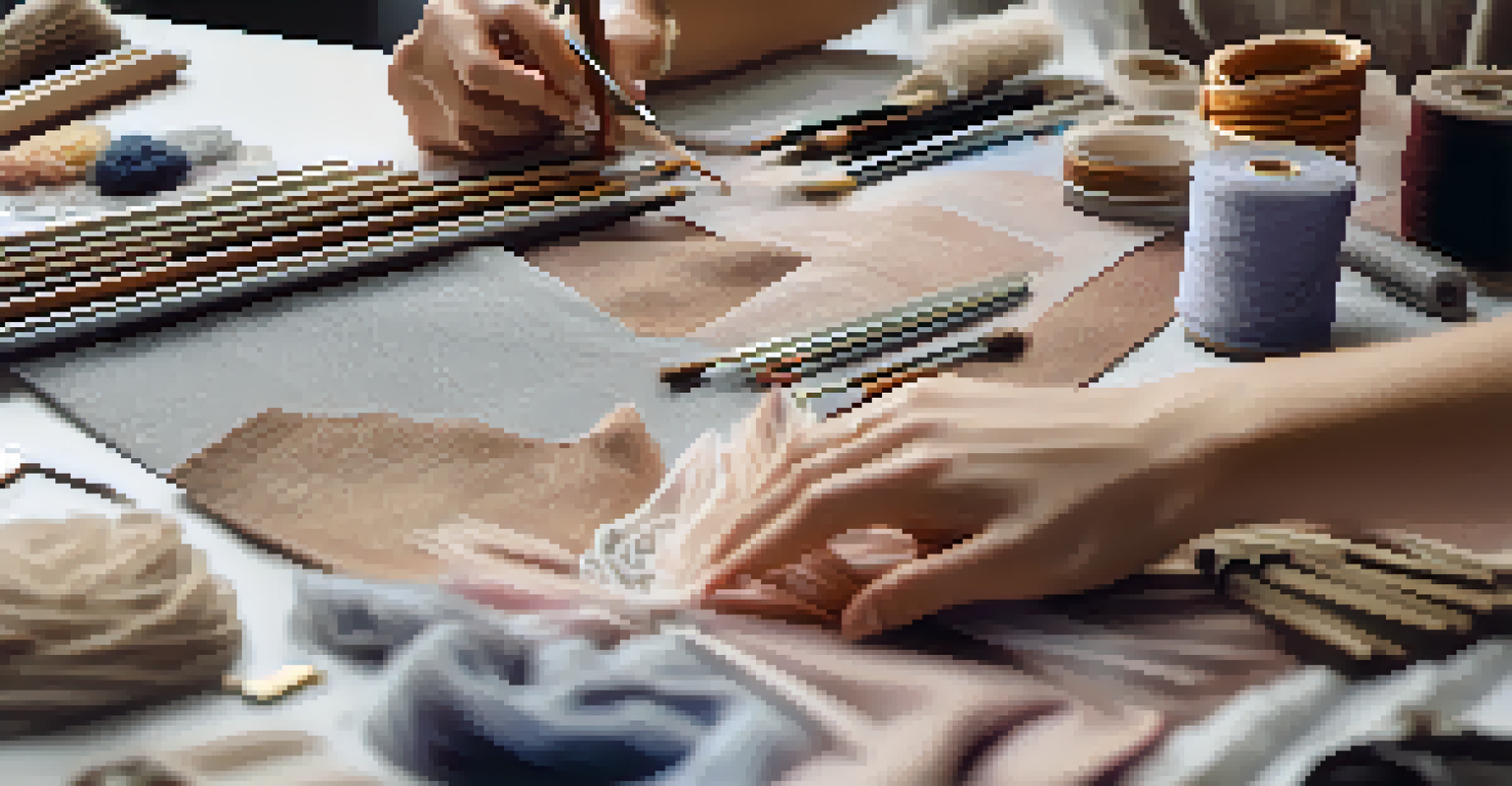Collaborative Learning in Fashion: Fostering Creativity

Understanding Collaborative Learning in Fashion
Collaborative learning is a teaching approach that emphasizes teamwork and shared knowledge. In the fashion industry, this means designers, students, and professionals come together to share ideas and techniques. By working collaboratively, individuals can spark creativity and innovation, which is vital in a field that thrives on newness and originality.
Alone we can do so little; together we can do so much.
Imagine a group of fashion design students working on a project together. Each brings their unique perspective, skills, and cultural influences to the table. This diversity not only enriches the learning experience but also leads to the creation of more innovative designs than if they worked in isolation.
Ultimately, collaborative learning helps to break down barriers between individuals, promoting an environment where creativity can flourish. It encourages open communication and feedback, which are essential for growth in any creative endeavor.
The Role of Teamwork in Fashion Education
Teamwork is at the heart of collaborative learning, especially in fashion education. When students work in groups, they learn to value each other's contributions and ideas. This process builds not only their design skills but also essential soft skills like communication and conflict resolution.

For example, a team of students might be tasked with creating a sustainable fashion line. By pooling their knowledge about materials, ethics, and market trends, they can design a collection that is both innovative and responsible. This collective effort often leads to groundbreaking concepts that might not have emerged in a solo project.
Collaborative Learning Sparks Innovation
Working together in diverse teams enhances creativity and leads to more innovative fashion designs.
Moreover, working in teams prepares students for the real-world fashion industry, where collaboration is key. From marketing to production, understanding how to work with others is crucial for success in this dynamic field.
Harnessing Diversity for Creative Solutions
Diversity in a collaborative setting can lead to more creative solutions. Different backgrounds, cultures, and experiences bring unique perspectives, which can inspire innovative approaches to fashion design. When individuals with varied viewpoints collaborate, they challenge each other's thinking and push the boundaries of creativity.
Creativity is thinking up new things. Innovation is doing new things.
Consider a group project where students from different countries come together. Each student might have a distinct approach to color, silhouette, or fabric choice based on their cultural heritage. This blend of ideas can result in a collection that is rich, vibrant, and deeply informed by a variety of influences.
In essence, embracing diversity within collaborative learning not only enhances creativity but also prepares future designers to work in a globalized industry. The ability to appreciate and incorporate various perspectives is a valuable skill that can set them apart in their careers.
Building a Supportive Creative Environment
A supportive environment is crucial for fostering creativity in collaborative learning. When individuals feel safe to express their ideas without judgment, they are more likely to think outside the box. This psychological safety encourages experimentation and risk-taking, both essential for creative growth.
In a fashion design classroom, this might look like open critiques where students share feedback in a constructive manner. Instead of feeling vulnerable, students learn to view feedback as an opportunity for improvement, leading to stronger designs and deeper understanding.
Teamwork Builds Essential Skills
Group projects in fashion education cultivate not only design skills but also vital soft skills like communication and conflict resolution.
Creating this atmosphere requires effort from both educators and students. By promoting respect, encouragement, and open-mindedness, everyone involved can thrive creatively and collaboratively.
Tools and Techniques for Effective Collaboration
To make collaborative learning effective in fashion, certain tools and techniques can be employed. Digital platforms like shared design software or social media groups can facilitate communication and idea sharing. These tools allow teams to work together seamlessly, even if they're not in the same location.
For instance, using a platform like Adobe Creative Cloud enables students to collaborate on design projects in real-time, making it easier to merge ideas and see immediate results. This immediate feedback loop can significantly enhance the creative process.
Additionally, regular brainstorming sessions and workshops can help maintain momentum and creativity within teams. By dedicating time to explore new concepts and refine ideas, students can foster a culture of collaboration that thrives on creativity.
Overcoming Challenges in Collaborative Learning
While collaborative learning offers numerous benefits, it also comes with challenges, such as differing work ethics and communication styles. These differences can lead to friction among team members, potentially stifling creativity. Recognizing and addressing these issues early on is essential for a successful collaborative experience.
For instance, if one student prefers to work independently while others thrive in a group setting, it can create tension. Open discussions about work preferences and setting clear expectations can help bridge these gaps. Establishing roles within a team can also ensure that everyone feels valued and contributes effectively.
Embracing Diversity Fuels Creativity
Different cultural perspectives in collaborative settings inspire unique approaches to fashion, enriching the creative process.
Ultimately, overcoming these challenges requires patience, understanding, and a willingness to compromise. By navigating these hurdles together, teams can emerge stronger and more cohesive, ultimately enhancing their creative output.
The Future of Collaborative Learning in Fashion
As the fashion industry continues to evolve, so too will the methods of collaborative learning. Embracing technology and innovative teaching strategies will play a significant role in shaping how future designers learn and create together. The integration of virtual reality and online collaboration tools is just the beginning.
Looking ahead, we can expect to see more interdisciplinary projects that combine fashion with technology, sustainability, and other fields. These collaborations can lead to groundbreaking ideas that redefine the industry, demonstrating the power of collective creativity.

In conclusion, the future of collaborative learning in fashion is bright. By fostering an environment that values teamwork, diversity, and innovation, we can nurture the next generation of creative thinkers who will shape the industry for years to come.